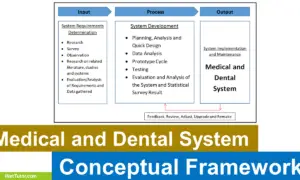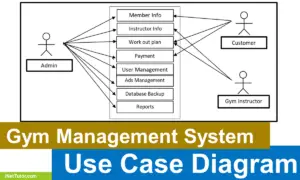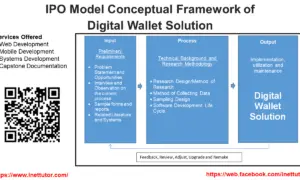Ecommerce Website in Django Conceptual Framework
This post presents the Conceptual Framework of the Ecommerce Website in Django which is based on IPO model.
About the Project
Table of Contents
The capstone project, “eCommerce Website in Django” is designed to automate the sale and purchase of products or services via internet means. Businesses can sell products using the platform; they can post the products with the price and ship them to the buyers when purchased. Consumers can browse the website to buy and process the payment of the product anytime and anywhere.
Traditionally, selling and buying goods are done through personal means. The sellers have their physical store that displays their products and goods, and customers will visit the store to look for products and manually buy them. The traditional retail process is limited by physical barriers and time constraints. It requires valuable time and effort from both the retailers and the consumers. There is an obvious need for development in the retail business processes to increase operational efficiency and overall customer experience and satisfaction.
Readers are also interested in: Marketplace Platform in Django Free Source code
Objectives of the Study
- To develop a system that will transform the traditional retail business into an electronic one.
- To allow consumers to conveniently browse and purchase products online.
- To develop an effective platform for marketing and attracting a large sum of customers.
- To allow retail businesses to efficiently market their products online.
- To increase the operational efficiency of retail businesses and overall customer satisfaction.
- To evaluate the system in terms of acceptability, efficacy, reliability, productivity, and quality.
Conceptual Framework/Model of E-commerce Website in Django
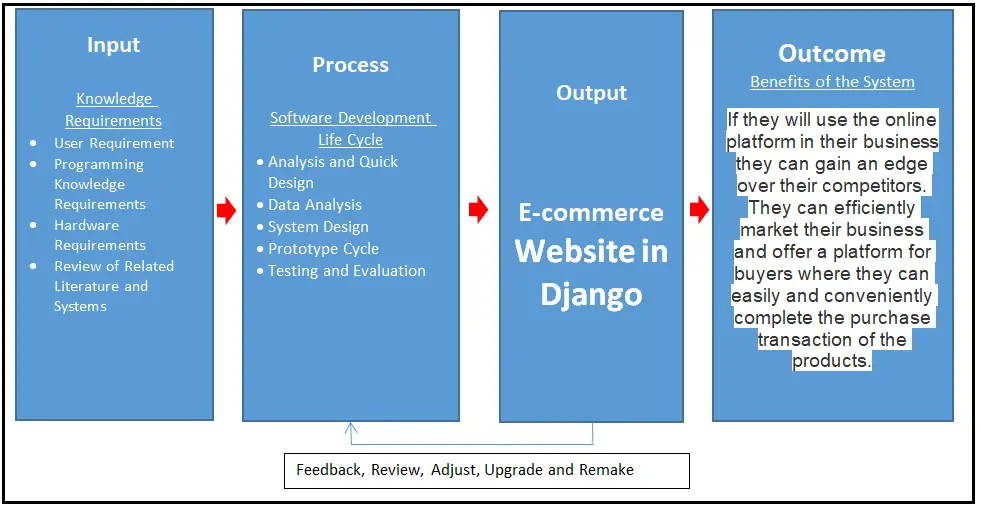
The image above is the conceptual framework of the project entitled E-commerce Website in Django. It is based on IPO model or also known as the input, process and output model.
Input
The input phase or the knowledge requirement stage consists of the following:
- User Requirement – the researchers conducted an interview with business organizations to identify their needs so that the team can develop the appropriate system that will answer their existing concerns.
- Programming Knowledge – after determining the problems, a solution must be provided and that solution is in a form of information system that will be written in the programming language where the researchers has and adequate knowledge.
- Hardware Requirements – the system cannot work alone without the hardware such as the computer and mobile devices. The researchers had explained it to the farmers that they need that hardware to fully utilize the E-commerce website developed using Django.
- Related Literature and Systems – the researchers conducted research on the different literatures and related systems to serve as a guide in the development of the E-commerce Website in Django.
Readers are also interested in: Python Django Ecommerce Free Source code
Process
Analysis and Quick Design
During Analysis and Quick Design, the researchers did a personal interview with the respondents and the chosen client where the study was conducted. The respondents were given the chance to suggest how the system will be designed. After conducting the data gathering, the researchers made an initial design for the proposed system.
Data Analysis
The researchers will analyze all the data, user requirements and information. This phase also help the researchers to have an idea on how to create the system and have an idea on how the proposed system would be beneficial to the clients.
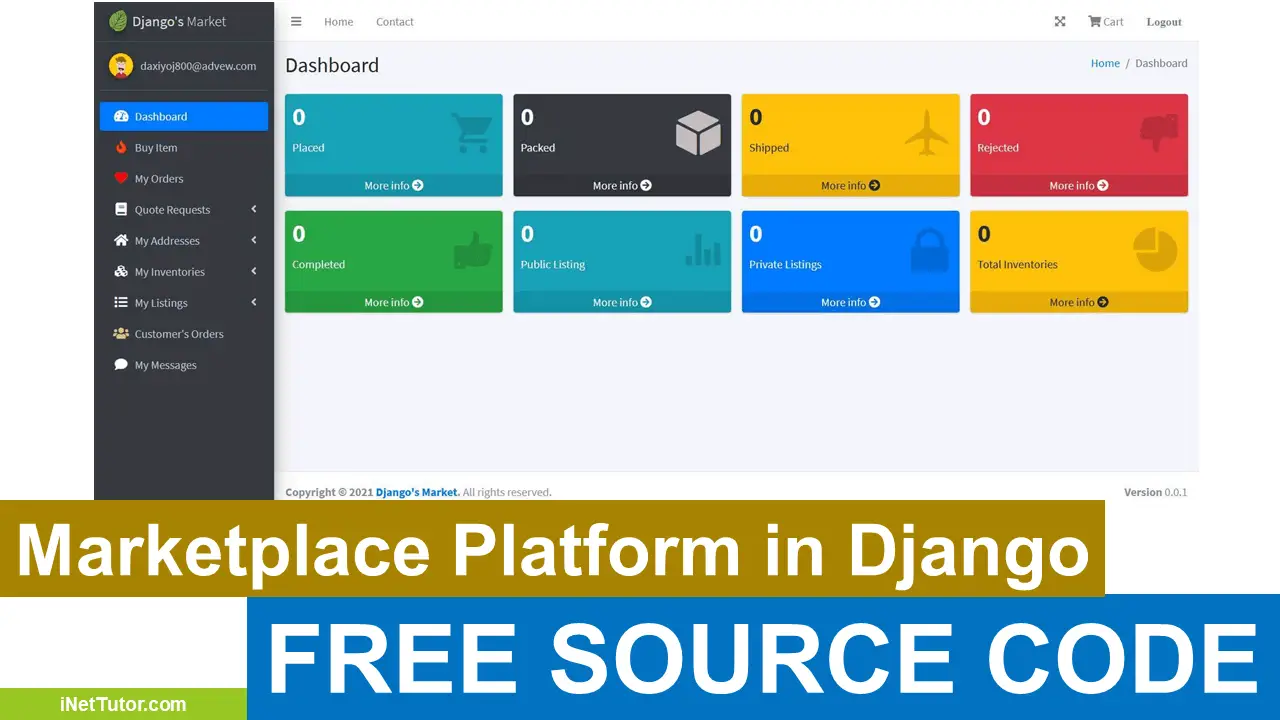
System Design
The researchers will start to develop the proposed system. It includes the design; how the system would look like based on user requirements, and the researchers/programmer would like to add personal design to make the system more interactive and user friendly.
In the design phase of an ecommerce website using the Django system, the key points that should be included are:
- The overall look and feel of the website. This includes the website’s layout, color scheme, and font choices.
- The website’s navigation system. This includes the structure of the navigation menus and links, as well as the individual pages within the menus.
- The website’s content. This includes the text and images that make up the website’s pages.
- The website’s features and functionality. This includes the features that are available on the website, such as product listings and shopping carts, as well as any custom features that have been added.
- The website’s security and usability features. This includes the measures that have been taken to protect the website’s users from online threats, as well as the overall user interface design and layout.
- The website’s SEO features. This includes any measures that have been taken to improve the visibility of the website on search engines.
- The website’s overall performance. This includes the speed and reliability of the website’s various features, as well as the response time of the website’s pages.
Readers are also interested in: NFT Marketplace System Build Using Django
Prototype Cycle
This stage will include the compiling, building, demonstration also refinement of the data gathered by the researchers. The researchers first build a prototype based on the planed design and data tables. After building the prototype it will be demonstrated to the client. The researchers show the function of the system, the flow on how it works, and the functions of the features that are included in the system. The last stage is refinement where in the researchers will refine the system by client’s additional needs. This will include changes in features flow and functions based on the requirements.
Testing and Evaluation
This will include the feed backing of the proposed system after it will be implemented and had undergone testing by three Experts. It will also inform the researchers and the developer if there are any bugs, suggestion and if the system’s functionality will work well.
This will discuss the implementation of the proposed system wherein Three (3) Experts will evaluate the proposed system. This will also discuss if the recommended functions and suggestion are met.
Output
The study’s ultimate outcome is a database-driven e-commerce website that will replace the traditional way of selling and purchasing goods. The system’s implementation is strongly encouraged.
Outcome
Benefits of the System:
If they will use the online platform in their business, they can gain an edge over their competitors. They can efficiently market their business and offer a platform for buyers where they can easily and conveniently complete the purchase transaction of the products.
Summary
This article discusses the Django conceptual framework’s E-commerce Website, which is built on the input, process, and output (IPO) paradigm. Researchers must develop user criteria, programming knowledge requirements, hardware requirements, and an evaluation of related literature and systems during the input phase. Throughout the project, the researchers will employ the Software Development Life Cycle Technique. The study’s ultimate goal is to create a database-driven e-commerce website to replace the old method of selling and acquiring things. The implementation of the system is actively encouraged.
You may visit our Facebook page for more information, inquiries, and comments. Please subscribe also to our YouTube Channel to receive free capstone projects resources and computer programming tutorials.
Hire our team to do the project.
